How to Spot Roof Problems Before They Cost You Thousands: The Drone Advantage
September 9, 2025
Discover how drone inspections can catch roof problems early—saving you thousands in repairs—with high-resolution aerial imagery and expert analysis.
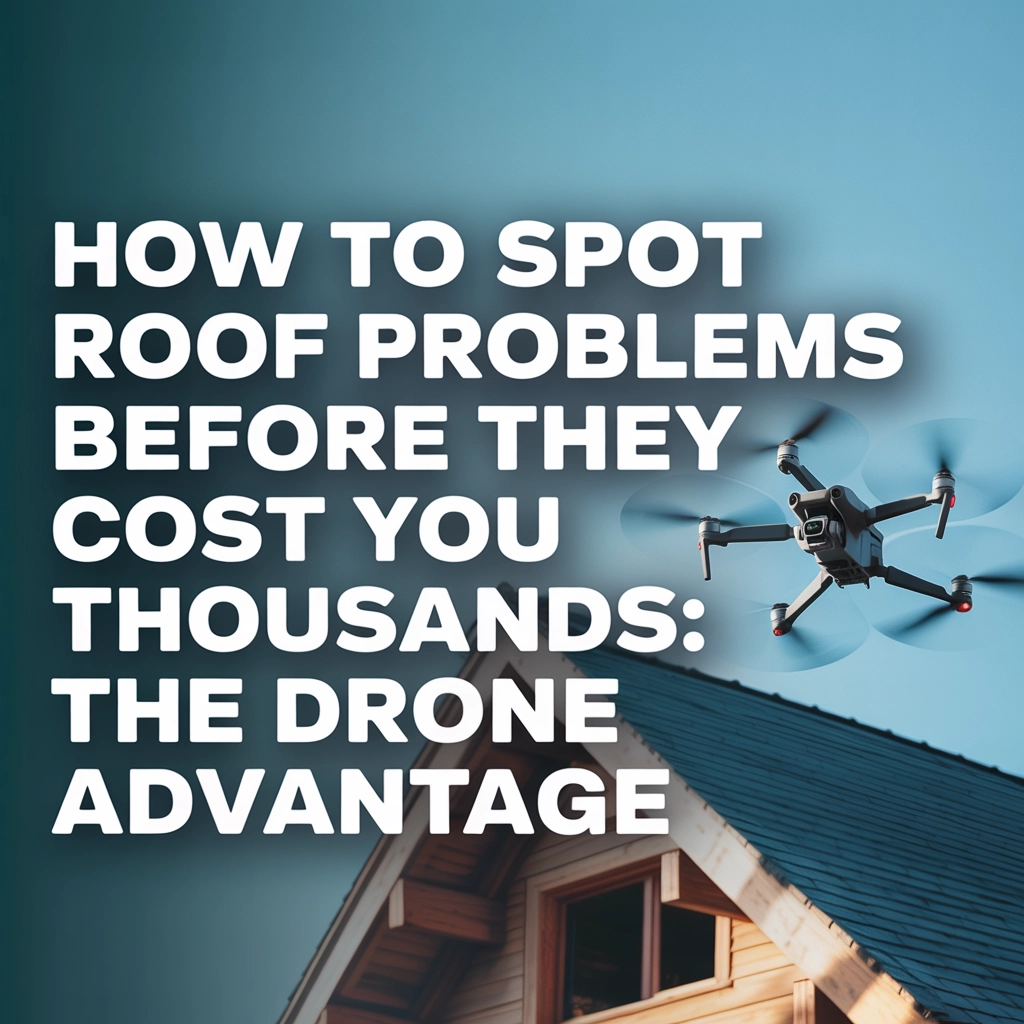
Roof problems cost property owners thousands of dollars annually. Most damage occurs gradually, remaining invisible until major structural issues develop. Traditional inspection methods miss early warning signs. Drone technology changes this equation entirely.
Early Detection Prevents Catastrophic Damage
Drones identify roof problems before they become visible from ground level. High-resolution cameras capture detailed imagery of every surface area. Minor cracks, loose shingles, and small leaks become apparent immediately.
Traditional inspections occur annually or after storms. Drone inspections can happen monthly or quarterly. Frequent monitoring catches problems during initial stages. Early intervention costs hundreds instead of thousands.
Property owners save 60-80% on repair costs through early detection. A small leak repair costs $200-500. The same leak, left undetected, causes structural damage exceeding $10,000.
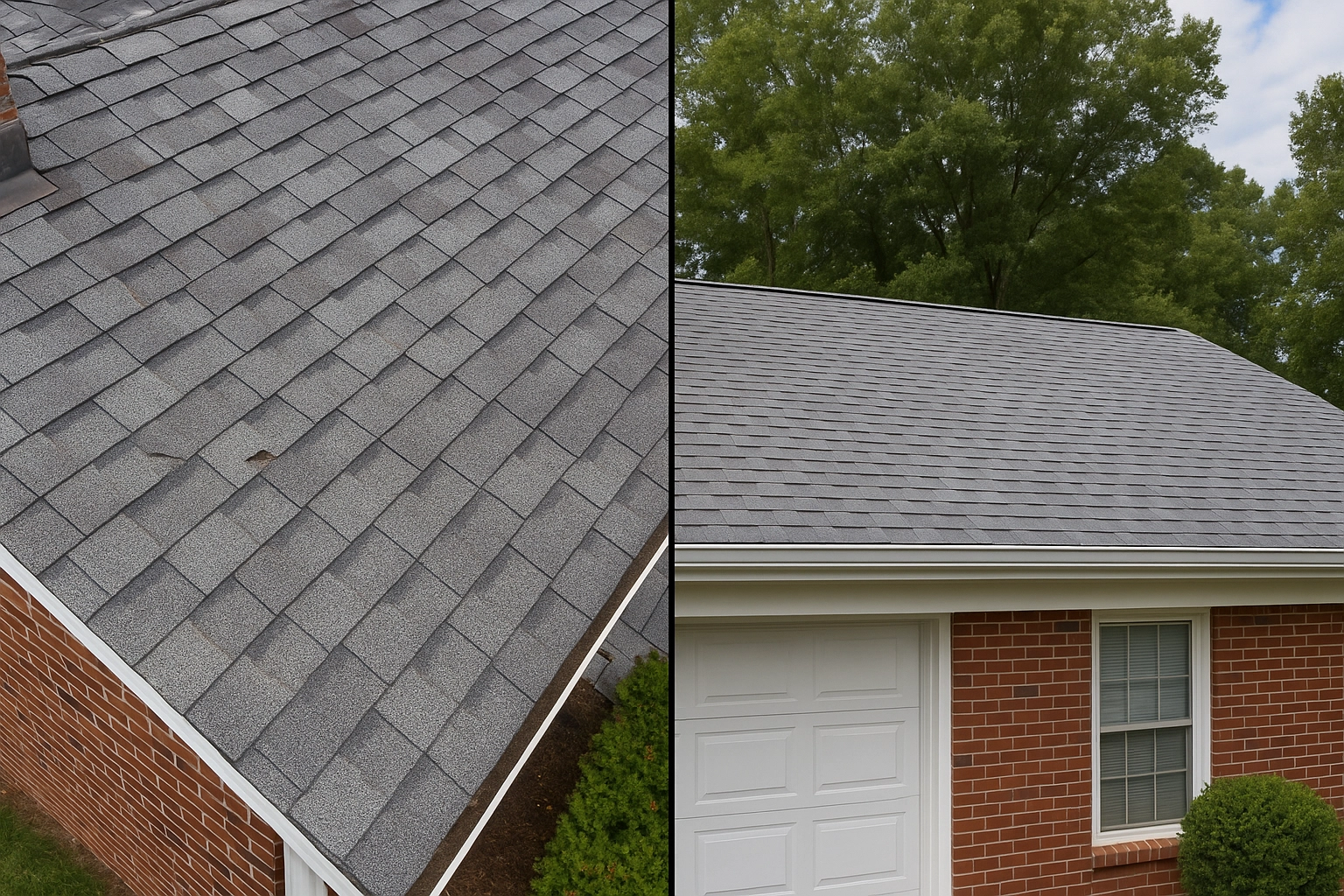
Thermal Imaging Reveals Hidden Problems
Standard cameras show surface-level damage. Thermal imaging cameras detect temperature variations indicating moisture intrusion, insulation problems, and structural weaknesses.
Water damage appears as cooler areas on thermal images. Insulation gaps show as temperature inconsistencies. HVAC system problems become visible through heat signature analysis.
Thermal imaging identifies problems weeks or months before visual symptoms appear. Moisture detection prevents mold growth and structural decay. Energy loss identification reduces utility costs.
Comprehensive Problem Identification
Drones detect multiple roof problem categories simultaneously:
Structural Issues: Sagging areas, damaged support beams, compromised decking materials.
Weather Damage: Hail damage, wind-lifted shingles, storm-related membrane tears.
Wear and Deterioration: UV damage, granule loss, aging material breakdown.
Installation Problems: Improper flashing, inadequate sealing, incorrect fastener placement.
Debris and Blockage: Clogged gutters, accumulated leaves, ice dam formation.
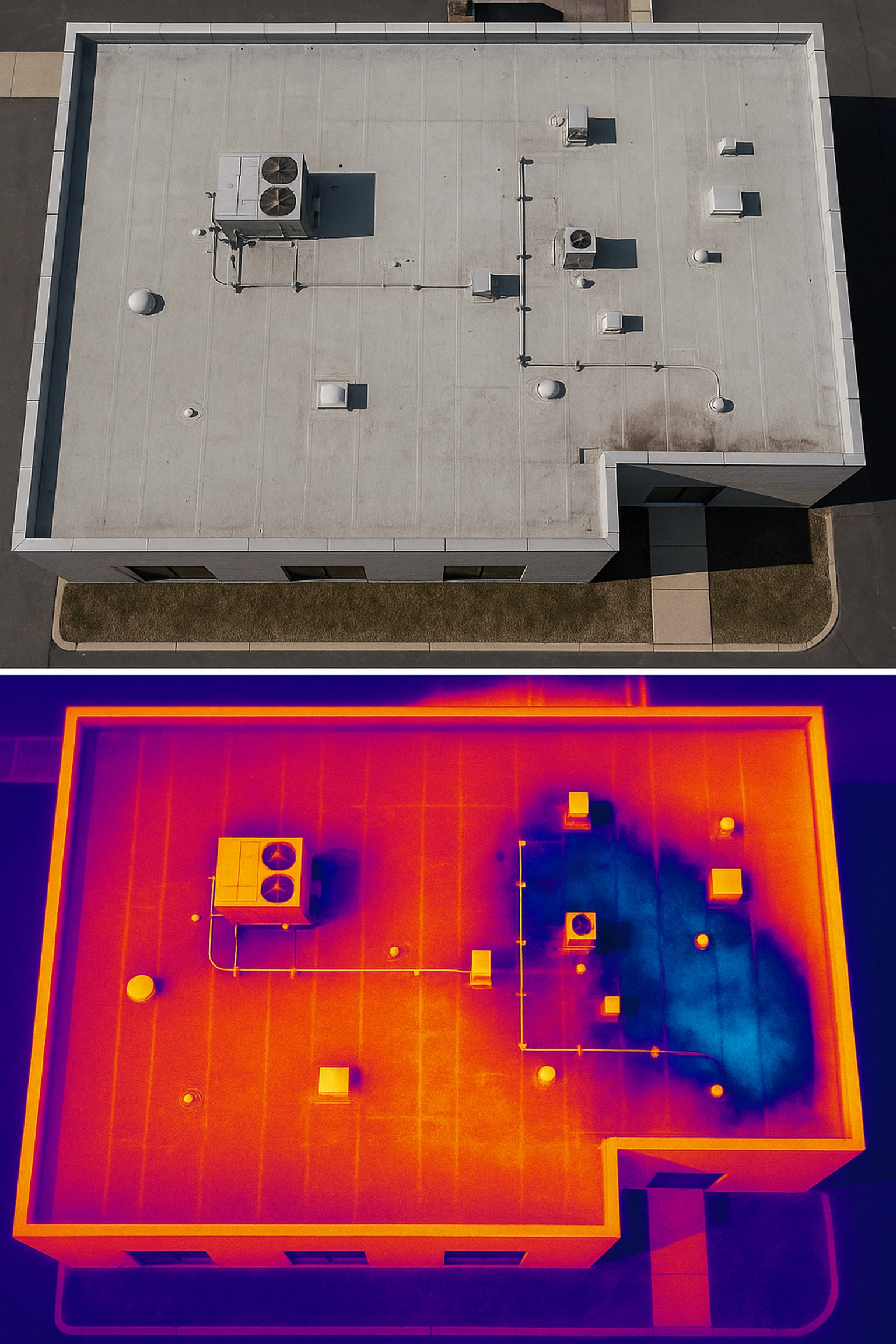
Cost Analysis: Drone vs. Traditional Inspections
Traditional roof inspections require scaffolding, ladders, and safety equipment. Labor costs range from $300-800 per inspection. Safety equipment rental adds $200-400. Insurance liability increases inspection costs by 20-30%.
Drone inspections eliminate equipment rental costs. Inspection time reduces from 4-6 hours to 30-60 minutes. Total cost decreases by 40-60% compared to traditional methods.
Frequency matters significantly. Traditional inspections happen once yearly due to cost constraints. Drone inspections enable monthly monitoring at comparable annual costs.
Safety Elimination Benefits
Traditional inspections expose personnel to fall risks, electrical hazards, and structural collapse dangers. Worker compensation claims from roof-related accidents average $45,000 per incident.
Drone inspections eliminate human exposure entirely. Operators remain at ground level throughout the process. Insurance liability decreases substantially. OSHA compliance improves automatically.
Steep-pitched roofs, damaged structures, and weather-compromised surfaces become safely inspectable. Access to previously unreachable areas provides complete coverage.
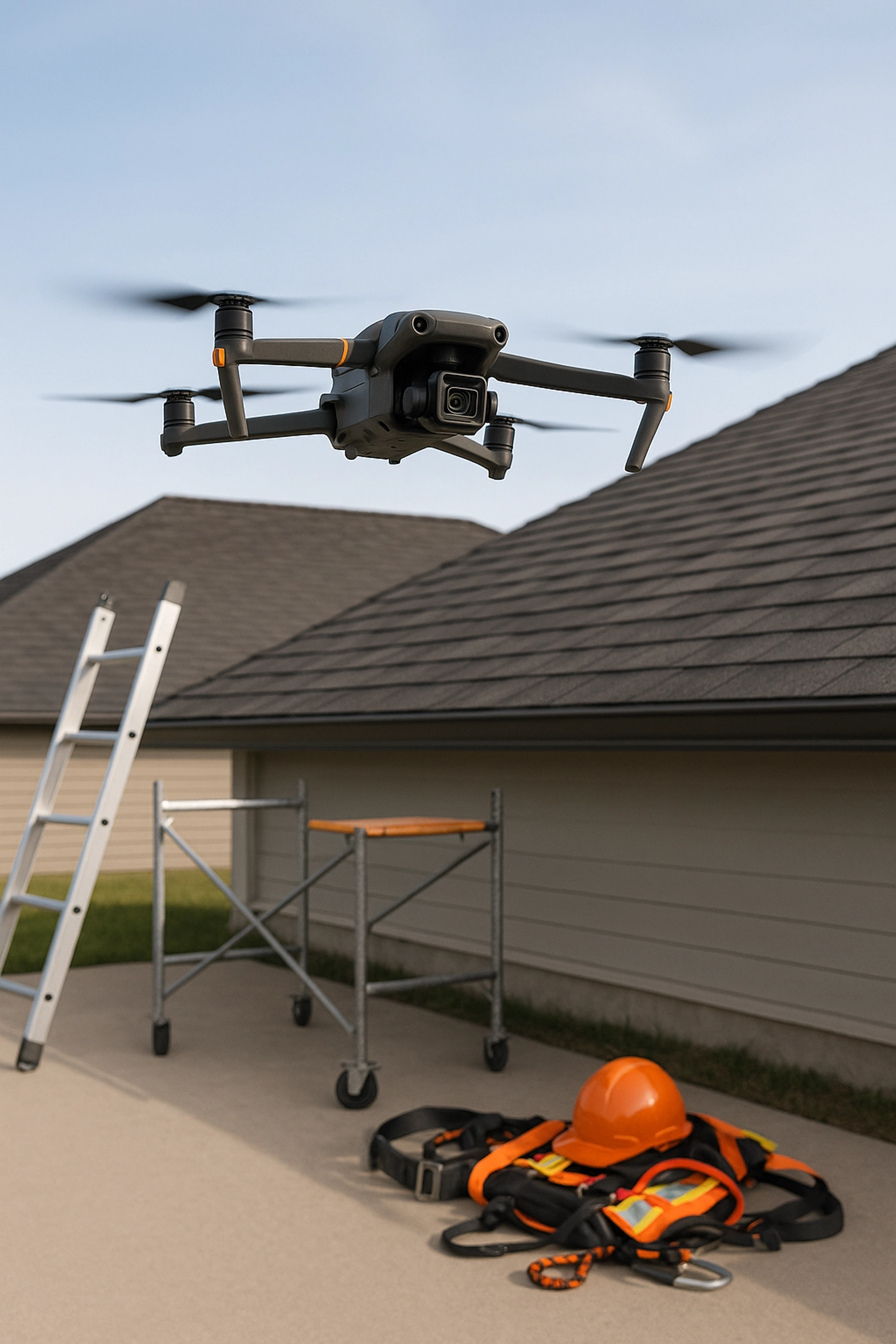
Speed and Data Quality Advantages
Manual inspections miss 15-20% of roof surface area due to access limitations. Visual assessment relies on inspector experience and weather conditions. Documentation consists of basic notes and limited photography.
Drone inspections capture 100% surface coverage. 4K video recording preserves complete visual records. GPS coordinates tag specific problem locations. Orthomosaic mapping creates detailed roof layouts.
Data processing generates comprehensive reports within 24 hours. Time-stamped imagery tracks problem progression over time. Comparative analysis identifies developing issues before critical failure.
Technology Integration Benefits
Modern inspection drones integrate multiple sensor technologies. LiDAR scanning creates precise 3D roof models. Multispectral imaging identifies material composition changes. AI analysis flags potential problem areas automatically.
Cloud-based data storage enables remote access and collaboration. Property managers review inspection results from any location. Contractors receive precise problem locations and severity assessments.
Historical data comparison tracks roof condition changes over time. Predictive analytics estimate remaining useful life. Maintenance scheduling becomes data-driven instead of calendar-based.
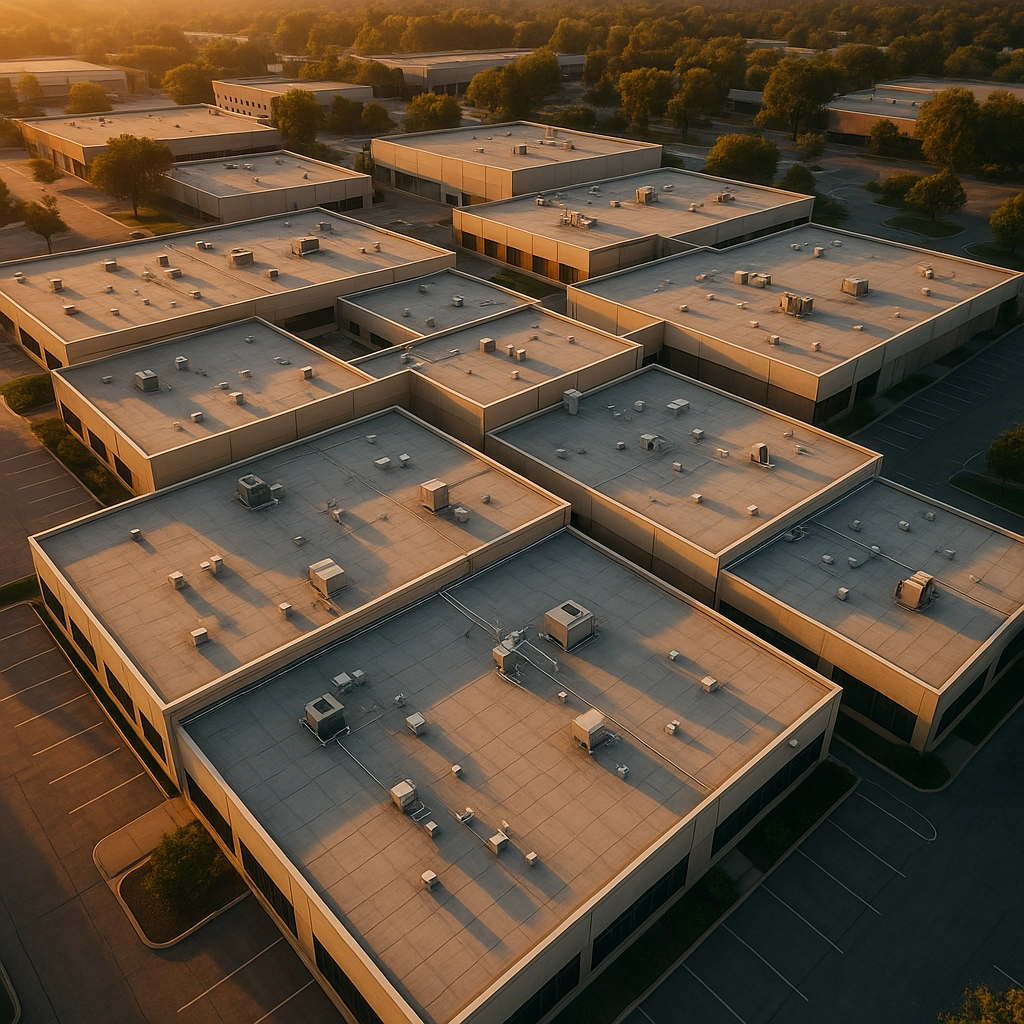
Commercial Property Applications
Large commercial buildings present unique inspection challenges. Traditional methods require weeks of planning and significant equipment investment. Access restrictions complicate thorough evaluation.
Drone inspections complete 100,000+ square foot roof surveys in 2-3 hours. Multiple building inspection occurs during single site visits. Minimal business disruption maintains normal operations.
Property portfolios benefit from standardized inspection protocols. Consistent data collection enables direct condition comparisons. Maintenance budgeting becomes accurate and predictable.
Documentation and Reporting Standards
Professional drone inspections produce standardized reports containing high-resolution imagery, thermal analysis, GPS-tagged problem locations, and severity assessments.
Reports include recommended action priorities and estimated repair costs. Insurance documentation meets claim requirements. Property sale inspections provide detailed condition assessments.
Digital documentation enables easy sharing with contractors, insurance adjusters, and property managers. Cloud storage preserves historical records indefinitely.
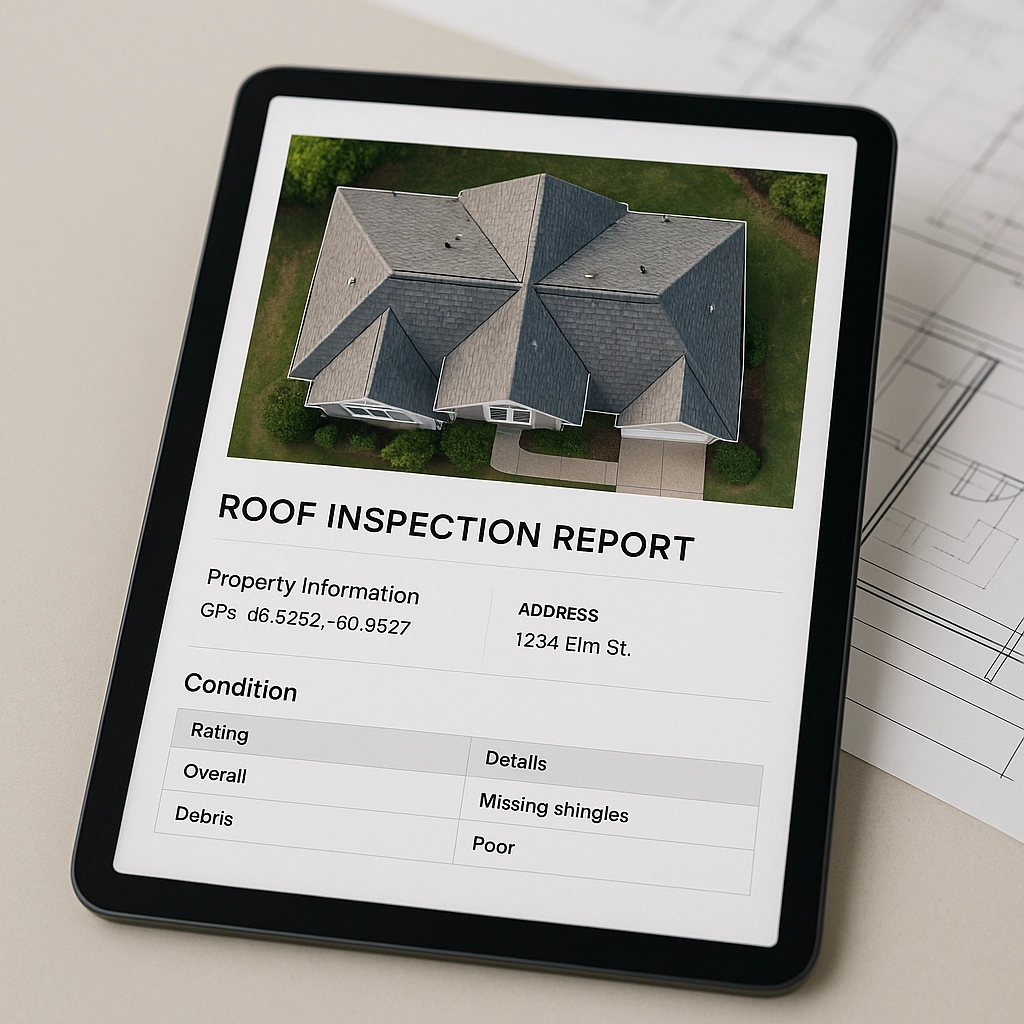
Implementation Strategy
Establish inspection frequency based on roof age, material type, and environmental exposure. New roofs require annual inspections. Older roofs need quarterly monitoring. Severe weather areas benefit from monthly assessments.
Schedule inspections during optimal weather conditions. Clear skies provide best visual documentation. Avoid windy conditions that affect drone stability. Post-storm inspections identify immediate damage.
Develop standardized checklists for consistent problem identification. Train personnel in drone operation and basic roof system knowledge. Maintain equipment calibration for accurate thermal imaging.
Return on Investment Analysis
Initial drone inspection investment pays for itself through prevented emergency repairs. Property owners report 300-500% ROI within first year of implementation.
Insurance premium reductions reflect improved risk management. Some carriers offer 10-15% discounts for documented preventive maintenance programs.
Property value increases through documented maintenance history. Prospective buyers pay premiums for well-maintained roof systems. Selling timeline decreases with comprehensive condition reports.
Professional Service Selection
Choose certified drone operators with roof inspection experience. Verify insurance coverage and FAA compliance. Request sample reports and client references.
Ensure thermal imaging capabilities for comprehensive problem detection. Confirm data security protocols for sensitive property information. Establish clear reporting timelines and communication procedures.
Make sure inspection frequency aligns with property risk factors. Coordinate scheduling with seasonal weather patterns. Maintain consistent service provider for historical data continuity.
Ready to protect your property investment with professional drone roof inspections? Contact SkySure Inspections today for comprehensive roof analysis that prevents costly surprises. Visit https://www.skysureinspections.com to schedule your inspection and start saving thousands on future repairs.

